In this article, we will teach you to step by step how to grow pumpkins from seed, following the steps we will give you will have an excellent pumpkin harvest this year.
Originally, it was grown for its seeds, but this custom gradually disappeared as varieties with better flavor and more pulp emerged.
Nowadays, pumpkin is sowed in warm and humid soils all over the world and is one of the most versatile foods that exist.
Indeed, they can be used in both savory and sweet recipes, and their health benefits are quite extensive.
Table of Contents
When to Sow Pumpkins from Seed
Before you know how to grow pumpkins from seed, you must know when you can plant them so that they grow properly.
Between March and June.
Pumpkin seeds need warmth to germinate, so they never germinate in very cold areas.
Therefore, it is ideal to plant pumpkins at times away from frost, that is, during the spring.
However, if you live in temperate or cold regions, sowing will be carried out until May and it will be necessary to sow in the seedbed.
The winter variety is sown in late summer and early autumn.
We recommend these quality seeds (Order it here).
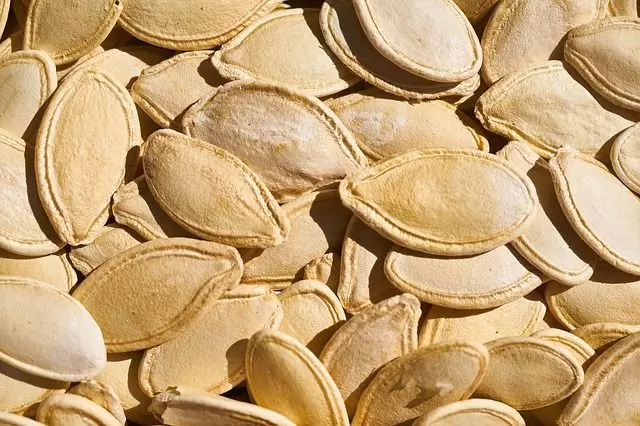
Where to Grow Pumpkins from Seed
It is very important to know where you will plant the pumpkin before you know how to grow pumpkins from seed.
Being plants from southern countries, they are very demanding in terms of light, so that more sunshine will have a direct impact on increasing the harvest.
Thus, for its location, we must choose a sunny place. Ideally, they should remain in the sun for 10 to 12 hours.
It is not too demanding in temperature, although it supports higher temperatures than other cucurbits such as melon, cucumber, or watermelon.
Temperate climates are the most suitable, but there are varieties well adapted to colder climates.
The optimum soil temperature for germination is between 68 and 77°F (20 and 25 ºC), for vegetative growth it is 77 to 86°F (25 to 30 ºC), and for flowering, again from 68 to 77°F (20 to 25 ºC).
Below 50°F (10 ºC) its development is paralyzed. Cold can reduce flowering.
Above 104°F (40 ºC), plant and temperature imbalances begin to occur.
How to Water Pumpkins
Pumpkins require high humidity throughout their life cycle due to their large leaf area and high water content in the fruit (about 95%).
The optimum relative humidity is between 65 and 80.
Very high relative humidities favor the development of airborne diseases, impede germination, and can cause root asphyxia.
On the other hand, a considerable lack of humidity can cause tissue dehydration, poor fertilization, and, finally, a decrease in production.
Watering should be frequent and regular, requiring more frequent irrigations with the appearance of the first fruits.
Waterlogging should be avoided at all times, as it is very harmful, and in the early stages of cultivation, excess water in the soil is not advisable for good rooting.
The most recommended irrigation systems are drip irrigation and foot irrigation, either by blanket or furrow irrigation.
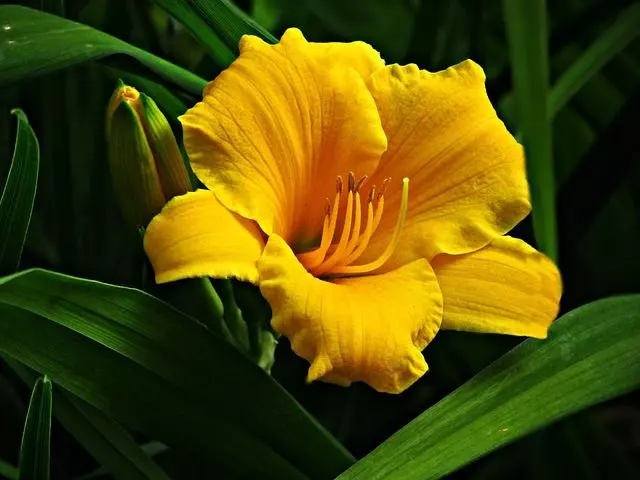
Ideal Soil for Pumpkins
The pumpkin is not very demanding in soil and adapts easily to all types of substrates, although it prefers those of loamy texture, deep and well-drained.
The soil, also, must contain enough organic matter, since it is very demanding in terms of nutrients.
For the same reason, it is very convenient to work the substrate well and add a good fertilizer. The best natural fertilizers are enriched compost or aged fertilizers.
Also, this type of soil heats up faster and retains heat more easily.
The optimum pH ranges between 5.6 and 6.8, although it can adapt to soils with pH values between 5.0 and 7.0.
It is a species moderately tolerant to soil and irrigation water salinity, but if the concentration of salts is very high the plants find it very difficult to absorb the irrigation water.
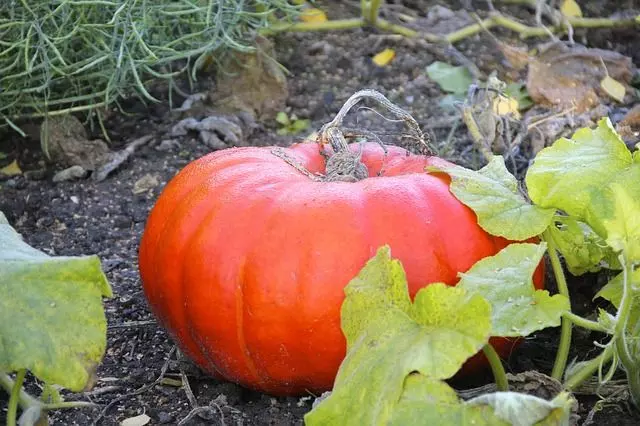
How to Grow Pumpkins from Seed Step by Step
Now we will explain step by step how to grow pumpkins from seed.
1- Clean the soil. Pull weeds, previous crops, and all types of debris to ensure that your pumpkins receive the proper amount of nutrients.
All plants should be pulled out at the root to prevent regrowth.
2- Moisten the soil before planting pumpkins. This reduces the risk of expelling the seeds by the force of the water.
3- Fertilize the soil. If you use natural fertilizers, mix them into the soil to a depth of 2 inches (5 cm).
4- Insert the seeds into the soil. To do this, create a small mound of soil and plant 2 or 3 seeds at a depth of 1” to 2” (3 to 5 cm).
Not only will the mound help improve drainage, but it will allow the sun to warm the soil faster, speeding up germination.
When you are finished, cover them lightly.
Don’t forget that each hole should be kept 16” to 35” inches apart (40 to 90 cm).
5- Select the healthiest and strongest seedlings.
The seeds will germinate in 5 to 8 days. If more than one seed has germinated in each hole, keep the strongest one.
To do this, do not pull the weaker ones, as you may damage the leaves. A simple pruning at ground level is sufficient.
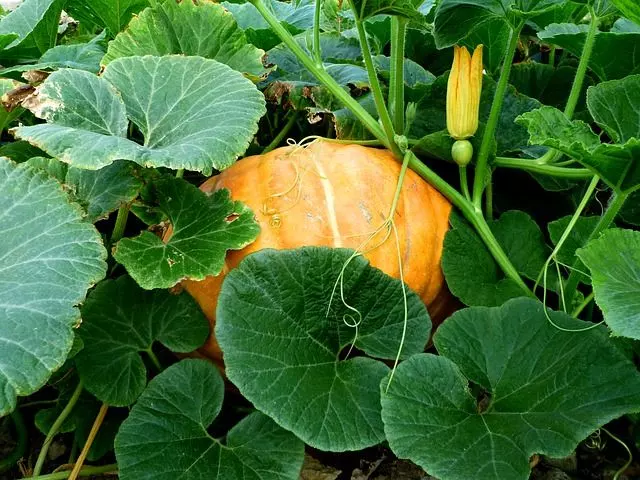
Maintenance Pruning of Pumpkin
Throughout the life cycle of the pumpkin, we will remove the leaves in poor condition.
In pumpkin cultivation, training pruning is not performed, so pruning is reduced to the cleaning of secondary shoots, which should be removed as soon as possible.
Occasionally you should clean the flowers, as they tend to fall off once they have completed their function and rot easily, which is a source of disease.
It is also recommended to clean the fruits regularly. This consists of removing fruits that are damaged by disease, malformations, or excessive growth.
Pumpkin Harvest
The harvest will be harvested 6 months after planting the pumpkins, in September and October.
To know the ripeness of the fruit, it is enough to stick the fingernail into the skin and if it penetrates easily, it is already ripe.
The best way to preserve the fruits is to store them in a ventilated place at a temperature between 50 and 68°F (10 and 20 ºC).
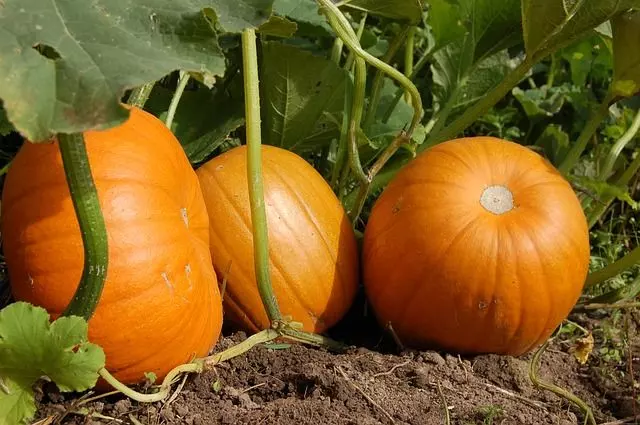
Common Pumpkin Pests and Diseases
Pumpkins are very hardy vegetables that are rarely attacked by pests. They do not require much care. However, some pests can affect our crops and we can eliminate them manually (removing bad leaves) or with natural pesticides such as neem oil.
Learn more about How to Make a Halloween Pumpkin Last Longer.
